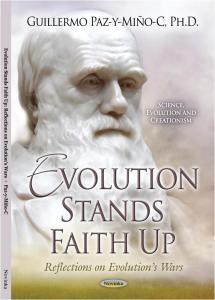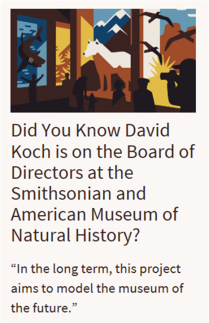By Guillermo Paz-y-Miño-C. PhD — © 2015
New England Science Public – An Initiative for the Public Understanding of Science – on Twitter @EvoLiteracy – @gpazymino – ResearchGate – Academia.edu
“Ecuador and its Academy of Sciences (Academia de Ciencias del Ecuador, ACE) are in a unique position, regionally and internationally, to make a significant impact in the development of science and technology. The official recognition of ACE, in Ecuador and the world, adds formality to the country’s tradition of involvement in scientific endeavors. And there is much optimism, at home and abroad, for what this amazing nation can do with its brain power and new generations of young investigators.”
Uniquely rich in history, culture, scenery and biodiversity, Ecuador has just formalized its Academy of Sciences (Spanish acronym ACE). But this South-American country’s contribution to scientific discoveries of world relevance –owing to its people, endemic flora and fauna, and wealth of natural resources— goes back to centuries:
Charles Darwin‘s interest in traveling the world on board of the HMS Beagle (1831-1836), and subsequent visit to Ecuador’s Galapagos Islands, in 1835, was inspired by Berlinese Alexander Von Humboldt‘s Personal Narrative of Travels to the Equinoctial Regions of America (1799-1804), a recount of expeditions in pristine Neotropic landscapes –many in today’s Ecuador.

Alexander von Humboldt (1769-1859) and Charles Darwin (1809-1882), both at young age.
“I formerly admired Humboldt, I now almost adore him; he alone gives any notion, of the feelings which are raised in the mind on first entering the Tropics…” Darwin wrote in 1832 in a letter to English botanist John Stevens Henslow. Almost three decades afterward, in 1859, Darwin‘s On the Origin of Species by Means of Natural Selection did forever-transform humanity’s understanding of Nature. His observations of the Galapagos finches, tortoises and marine iguanas, together with museum specimens he and others collected, became textbook exemplars of evolution.
Humboldt‘s own adventurous traveling had been sparked by the French geographer Charles Marie de La Condamine, who, in the 1730s, led the geodesic mission to measure the length of a meridian arc at the equator, in present Ecuadorian Andes, and thus test Isaac Newton‘s postulate that the Earth, due to gravitational forces and its rotation at a stable angle in respect to an orbiting trajectory around the sun, should be an oblate spheroid flattened at the poles.
By comparatively measuring the arc at the equator (La Condamine‘s team) and at the North Pole (another crew sponsored as well by the Paris Academy of Sciences), Newton‘s laws of motion and universal gravitation (published in Mathematical Principles of Natural Philosophy in 1687), were confirmed and the two-centuries ruling model of our planet’s elongation at the poles was debunked. A major scientific paradigm shift in which the location of a field site, the to-be Ecuador, played a critical role, as well as the involvement in the expedition of local cartographer Pedro Vicente Maldonado.

Motion of Sun, Earth, and Mars according to heliocentrism (left) and to geocentrism (right), before the Copernican-Galilean-Newtonian revolution. Note the retrograde motion of Mars on the right. Yellow dot, Sun; blue, Earth; red, Mars. (In order to get a smooth animation, it is assumed that the period of revolution of Mars is exactly 2 years, instead of the actual value, 1.88 years). The orbits are assumed to be circular, in the heliocentric case. Click on Image for SOURCE.
But this intertwined history of fascinating events gets even richer: the Newtonian proposal was rooted in Nicolaus Copernicus (1543) heliocentric hypothesis (= the sun as center of our solar system), confirmed by Galileo Galilei and Johannes Kepler, iconic figures in the astronomy of the 1600s and prior debunkers of the geocentric, creationist view (= the Earth as center of the universe). Another impactful scientific paradigm shift!
Thus, in hindsight, Ecuador’s geography and unique species richness have long been linked –and not coincidentally— to the very roots of modern science: from the Copernican revolution of the 1500s to the Darwinian revolution of the 1800s. This connection was possible due to the partaking of the Ecuadorian people in the success of so many expeditions to the New World led by naturalists and explorers, who ventured into Ecuador’s glaciers, the Amazon, the wet- and arid-coasts, and the “enchanted” Galapagos Islands.

Ecuadorian Geographer Pedro Vicente Maldonado (1704-1748). In 1736, he collaborated with the French Geodesic Mission.
Proud of such privileged heritage, the Ecuadorian scientists officially launched, only two years ago, on February 2013, their own Academy of Sciences. Although later than their counterpart Academies in the Americas, the Ecuadorians joined, as per July 2013, the Inter-American Network of Academies of Sciences (IANAS), and did it with historically distinctive credentials and originality: In the past two decades alone, Ecuador’s universities have hosted three world Evolution Summits in the Galapagos, sponsored field-research stations at the megadiverse Amazonian rainforests (Cuyabeno, Yasuní and Tiputini), led top executive positions at influential world conservation organizations (International Union for Conservation of Nature and World Wildlife Fund), and contributed to raise global awareness about the value of the indigenous peoples’ cultures and their impressive knowledge of the environment (fourteen distinctive ethno-nationalities coexist within a total population of 15 million). A remarkable vitae, indeed, for one of the small-sized countries in South America (284,000 square kilometers).

Induction Ceremony of ACE, Quito. Top: Dr. Carlos Soria, President of ACE; Dr. Michael Clegg Co-Chair IANAS; Ec. René Ramírez, General Secretary SENESCYT; Dr. Jaime Medina, Undersecretary of Innovation Science and Technology at SENESCYT; Dr. Santiago Ron, Secretary ACE. Middle: Dr. Carlos Soria and Dr. Michael Clegg. Bottom: audience.
And, just a few days ago, on February 19, 2015, ACE inducted twenty five new members –from ten different universities— to the Academy, which now consists of thirty one scholars, including six founders. President of ACE, Dr. Carlos A. Soria, Professor of Biochemistry at the Pontifical Catholic University of Ecuador, noted at the Induction Ceremony –held at the Eugenio Espejo Convention Center in Quito— that the Academy will continue to elect, as members, researchers in the life, earth, chemistry, exact and social sciences.
Dr. Soria remarked that ACE‘s broad purpose is to promote and disseminate research, facilitate the exchange of scientific information and technologies among partner institutions, sponsor professional development of researchers, and provide technical advice –upon solicitation— to the government and private sector. He drew attention to the significance of the applied sciences for the improvement of the quality of life, treatment of infectious diseases, like Ebola or malaria, and for addressing the challenges of air, soil and water pollution, or the sequels of climate change that, in the case of Ecuador, will affect its fragile ecosystems and biodiversity. His speech was an assertive, yet a gentle plea to attain support for the advancement of science, specifically from the government officials who attended the Ceremony. In fact, economist René Ramírez, General Secretary of Education, Science, Technology and Innovation (SENESCYT) and Dr. Jaime Medina, the Undersecretary of Innovation Science and Technology at SENESCYT, listened carefully to ACE’s President’s statement.
In an extensive, multi-topic assessment of the status of science and technology in Ecuador, and the government’s commitment to finance research, Secretary Ramírez conveyed that SENESCYT will continue to support ACE, as it has since 2013, when, together with the National Secretariat for Planning and Development (SENPLADES), they recognized ACE as an official organization. The General Secretary emphasized the new regulations the government has introduced to improve the standards in higher education, accredit universities, validate degrees obtained overseas by Ecuadorian scientists, and strategically allocate funds for research and development. SENESCYT‘s intentions seemed sincere, but ACE will need long-term financial sponsors to sustain its presence in the country and abroad.
Why are academies of sciences important? Why does Ecuador need ACE? These queries were addressed by Dr. Michael Clegg, Co-Chair of IANAS and representative of both the Global Network of Science Academies –or Inter Academy Partnership (IAP)— and US National Academy of Sciences (US-NAS). Dr. Clegg‘s address harmonized with Dr. Soria‘s by giving importance to the local, regional, national and international professional services that members of such prestigious organizations –the Academies— can provide to society at large.
“Academies are merit based and represent the scientific leadership within a country… They are self renewing institutions, free from political interference, and have credibility to inform the public and policy makers about looming problems and potential solutions.” – Dr. Michael Clegg, Co-Chair IANAS.
“Academies are merit based and represent the scientific leadership within a country,” stated Dr. Clegg, also a Professor Emeritus of Biological Sciences at the University of California – Irvine and member of the US-NAS. These organizations “are self renewing institutions, free from political interference, and have credibility to inform the public and policy makers about looming problems and potential solutions.” After all, “science is the world’s most successful means of knowledge creation, because it deals exclusively with arguments based on evidence, and with results that are subject to independent confirmation by others.” Dr. Clegg‘s remarks were both philosophically inspiring and practical; he aimed at supporting the mission and vision of ACE, as much as persuading SENESCYT‘s officials, and even perhaps the one hundred attendees to the Ceremony, that science is the best bet for solving development struggles and nourishing progress.
As representative of IANAS, Dr. Clegg welcomed ACE to the network as one of its twenty two member organizations and he elaborated on IANAS’ programs in the Americas, to which ACE is already contributing: capacity building (strengthening science and technology in the region, creation of new Academies), energy (for underserved populations, renewable, bioenergy and efficiency), science education (networking, improvement of schooling standards, science communication and outreach), water (access to clean sources, decontamination, recycling and management of natural reservoirs), and women in science (action committees, increase participation, equality and leadership roles).
Ecuador and ACE are in a unique position, regionally and internationally, to make a significant impact in the development of basic and applied research. The government is investing 1.86% of its GDP in higher education and the number of PhDs in the university system, currently around 1,000, is expected to double within the next few years. The official recognition of ACE, both in Ecuador –by SENESCYT and SENPLADES— and in the world –by IANAS, IAP and US-NAS, adds formality to the country’s tradition of involvement in scientific endeavors. And there is much optimism, at home and abroad, for what this amazing nation can do with its brain power and new generations of young investigators. — © 2015 by Guillermo Paz-y-Miño-C. all rights reserved.
Suggested Readings:
Helferich, G. 2004. Humboldt’s Cosmos: Alexander von Humboldt and the Latin American journey that changed the way we see the world. New York, NY: Penguin Group.
Montúfar, C. 2013. From Copernicus to Darwin (1473-1882). In: G.Trueba & C. Montúfar (Eds). Evolution From the Galapagos, Social and Ecological Interactions in the Galapagos. New York, NY: Springer Science Business Media.
Paz-y-Miño-C, G & Espinosa, A. 2013. Galapagos III World Evolution Summit: Why Evolution Matters. Evolution: Education and Outreach 6: 28.
Trueba, G. 2014. Why does evolution matter? The importance of understanding evolution. Cambridge UK: Cambridge Scholars.

Learn more about Ecuador





























































You must be logged in to post a comment.